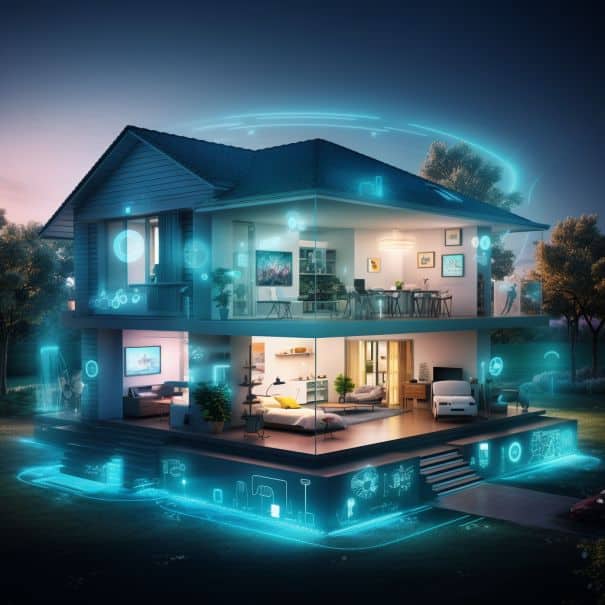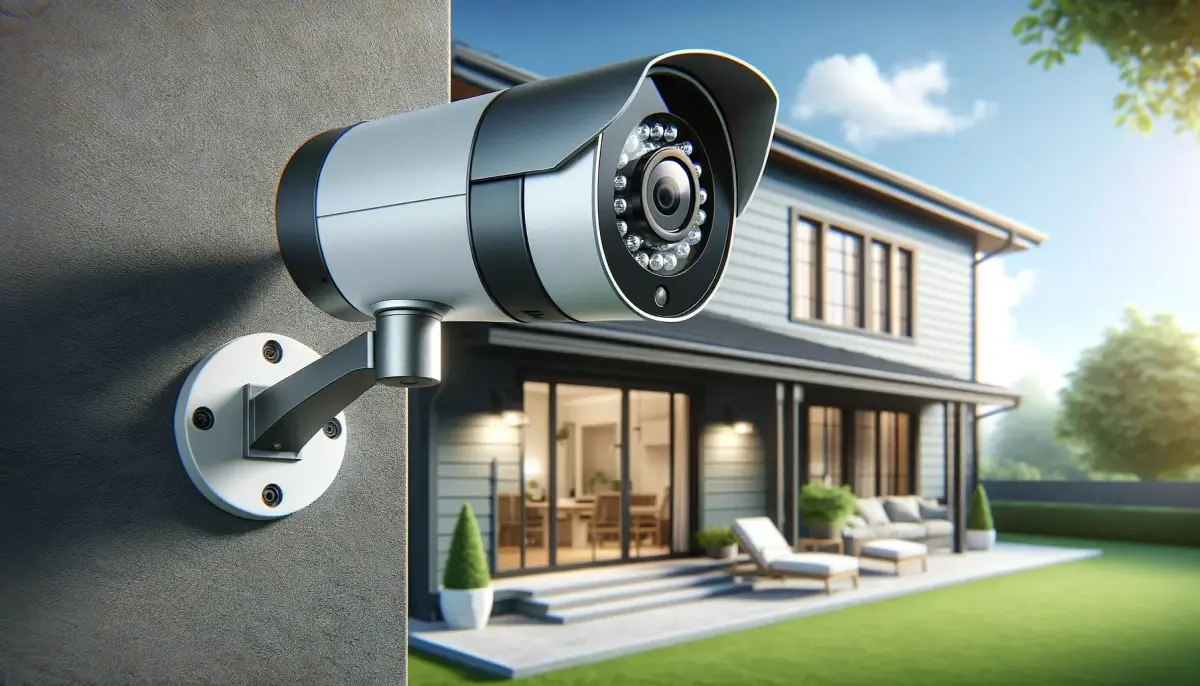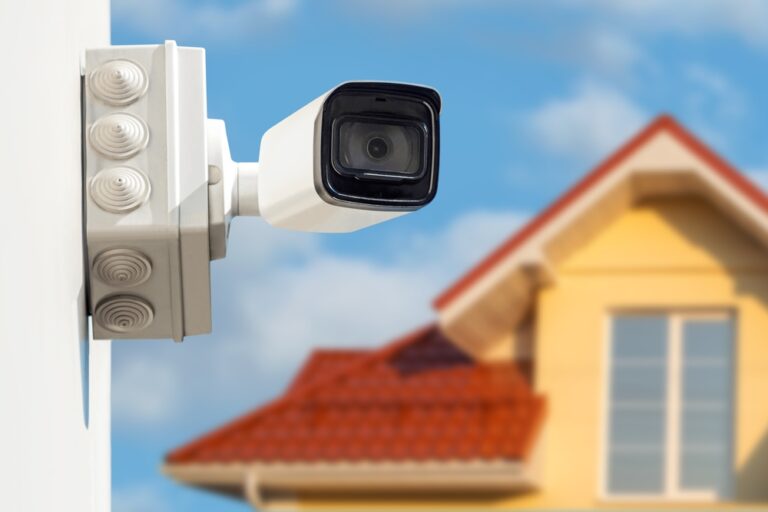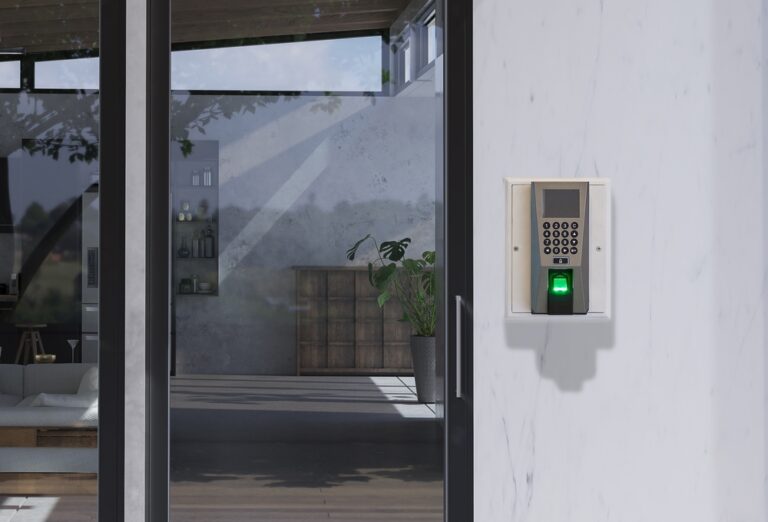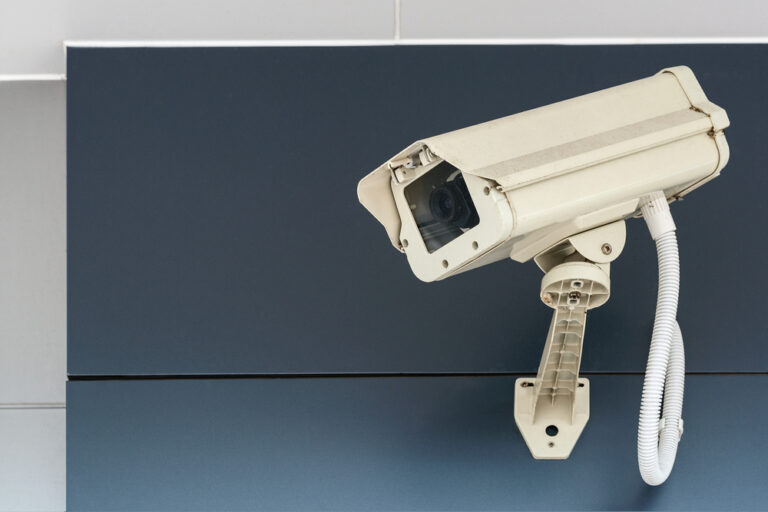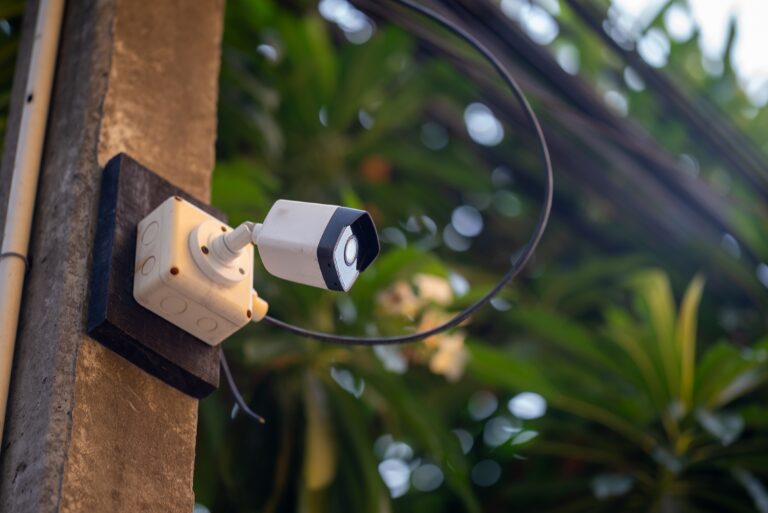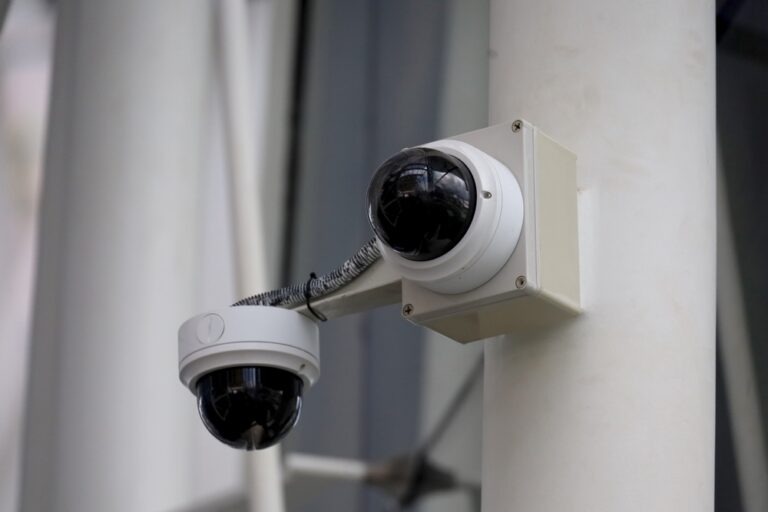- 1) What are Motion Sensors and How Do They Work?
- 2) Key Benefits of Using Motion Sensors for Home Security
- 3) Tips for DIY Installation of Motion Sensors
- 4) Real-World Examples of Motion Sensors in Action
- 5) Potential Limitations of Motion Sensors to Bear in Mind
- 6) Future Possibilities for Motion Sensing Technology
- 7) Why Choose Professional Installation?
- 8) Why Choose Jefferson Security Cameras?
- 9) FAQs
Home security has advanced drastically, with technology like motion sensors taking center stage. Motion sensors detect movements and alert homeowners about potential intruders. This provides an invaluable extra layer of security and peace of mind. Let’s do a deep dive into how motion sensors have transformed home security.
What are Motion Sensors and How Do They Work?
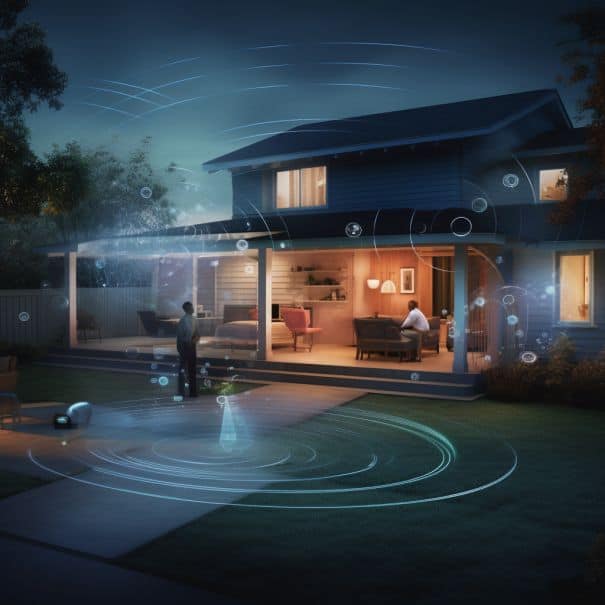
Motion sensors, also called motion detectors, are devices installed in homes and businesses to detect movement in a specified area. They work by emitting signals, whether infrared, microwave or ultrasonic, and monitoring for changes in reflections when motion occurs.
The most common types of motion sensors include:
- Passive Infrared (PIR) Sensors – These detect infrared energy emitted from bodies. The sensors monitor fluctuations in ambient infrared light levels, which change due to body heat when a person moves within range. They cannot detect stationary or very slow motion.
- Microwave Motion Sensors – These emit low-power microwave pulses and measure changes in the reflection patterns. Movement disturbs the transmission, triggering the alarm. Microwave sensors can cover larger areas than PIR but are more prone to false alarms.
- Ultrasonic Motion Sensors – These emit inaudible high-frequency sound waves and monitor for shifts in frequency caused by motion. They detect slower movements but perform poorly in open spaces.
- Dual Technology Sensors – As the name suggests, these combine two methods like PIR and microwave for enhanced motion detection accuracy and minimal false alarms. They are more expensive but offer better performance.
When motion is detected, the sensor sends a notification to the control panel or security system, which triggers a response like an alarm, a phone alert to the homeowner, or video recording. This enables swift action to deter intruders.
Key Benefits of Using Motion Sensors for Home Security

Motion sensors offer several advantages that make them invaluable additions to home security:
Real-Time Alerts and Notifications
Motion sensors provide immediate notifications via phone, text or email when movement is detected inside or around the home. This allows homeowners to promptly verify the situation through security cameras and contact authorities if required. Real-time alerts enable rapid response to any threats.
Enhanced Deterrence Effect
The visible presence of security cameras, warning signs and motion sensor equipment acts as a powerful deterrent for burglars, trespassers and other intruders. Criminals are less likely to target homes with visible security systems due to the higher risk of getting caught, so they move on to easier and more vulnerable targets.
Flexible Placement Options
Motion sensors are extremely adaptable when it comes to positioning. They can be installed indoors to monitor hallways, rooms and entryways. Outdoors, are ideal for driveways, gardens, porches and perimeter fences. Strategic placement enables thorough coverage of the premises.
Smarter Automated Linkages
An exciting benefit of motion sensors is the ability to connect them to other security and smart home systems to trigger automated responses. When motion is detected, it can prompt actions like turning on security cameras, lights, sirens, sprinklers, thermostats and more. This creates an intelligent network of protection.
Customizable Sensitivity Settings
One of the common complaints surrounding motion sensors is false alarms triggered unintentionally. Fortunately, most sensors allow you to adjust detection sensitivity to avoid this. Sensitivity can be reduced to prevent false alarms by pets or other motions while still detecting genuine security threats.
Remote Access and Control
Homeowners can access real-time motion sensor alerts even when away from home via security system apps on smartphones or tablets. This allows remote monitoring and control, providing added convenience and peace of mind. Any detected threats can be verified through security cameras.
With these significant advantages, motion sensors provide a critical extra layer of security for homes, especially as an element of comprehensive systems like those provided by security companies. The technology has enabled smarter and more automated property monitoring for homeowners.
Tips for DIY Installation of Motion Sensors

Installing motion sensors on your own as a DIY home security project is definitely doable for the hands-on homeowner. Here are some tips for smooth motion sensor installation:
- Survey your property and identify areas that need monitoring like doors, windows, driveways, patios, hallways, etc. This helps finalize ideal motion sensor locations.
- For optimal coverage, install motion sensors at choke points where intruders would typically move through, such as entryways or high-traffic hallways. Avoid obstructed areas.
- Carefully mount the motion sensors securely to walls or ceilings using screws and mounting brackets. Follow the instructions for the desired mounting height.
- Wireless motion sensors only require drilling holes for screws and avoiding interior blockades. Hardwired sensors need you to connect wires to power sources.
- Adjust motion detection sensitivity, activation delay and other settings. Run tests to identify optimal settings that provide security without excessive false triggers.
- Integrate your motion sensors properly with your home’s security system, connecting them to the control panel if needed. Verify connectivity.
- Consider getting professional assistance from a security company if you are unsure about wiring, electrical connections, ideal sensor placement or general installation.
- Check motion sensors periodically to ensure they remain securely mounted, angled correctly, and have new batteries if required. Proper maintenance preserves functionality.
With strategic placement and setup, DIYers can install motion sensors to get maximum security benefits. However, professional installation is recommended for optimal positioning and connectivity.
Real-World Examples of Motion Sensors in Action
To better understand how motion sensors improve home security, here are two real-world examples:
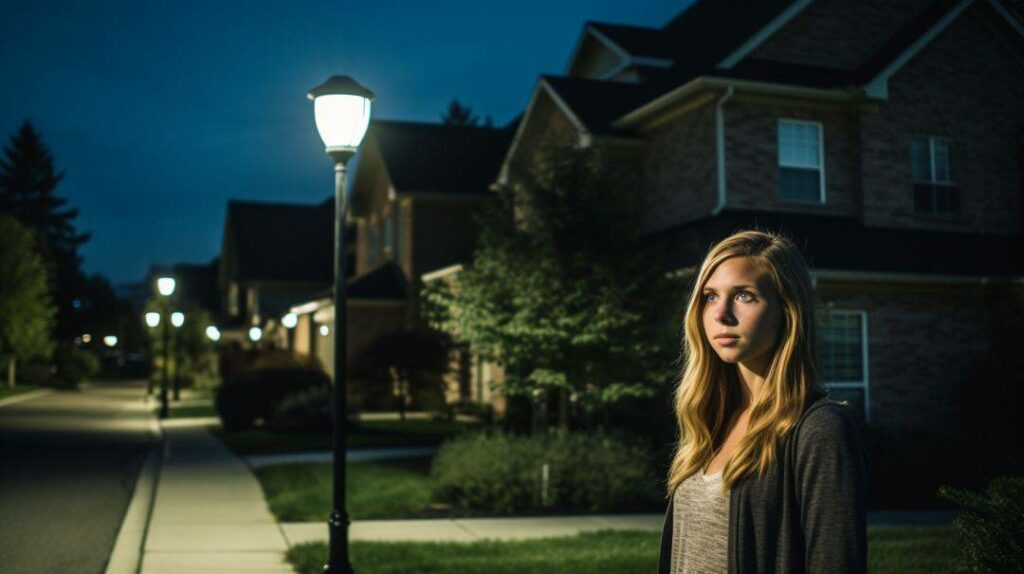
Sarah installed visible outdoor motion sensors around her suburban property which deterred some teens from loitering and skateboarding on her driveway at night. When the nuisance behavior persisted, the motion detectors notified Sarah through her security app. She was able to verify the trespassing through security cameras and notify the authorities to take action.

Mitch rigged his motion sensors to turn on sprinklers and lights when activated at night. One evening, a man tried to sneak onto Mitch’s back porch but was startled by the sudden sprinklers and bright lights. He fled immediately. Mitch was also alerted on his phone and this footage helped police identify the suspect through security footage.
These examples showcase how motion sensors notified homeowners about threats promptly, allowing rapid verification and response. The sensors provided evidence and ultimately deterred the intruders.
Potential Limitations of Motion Sensors to Bear in Mind
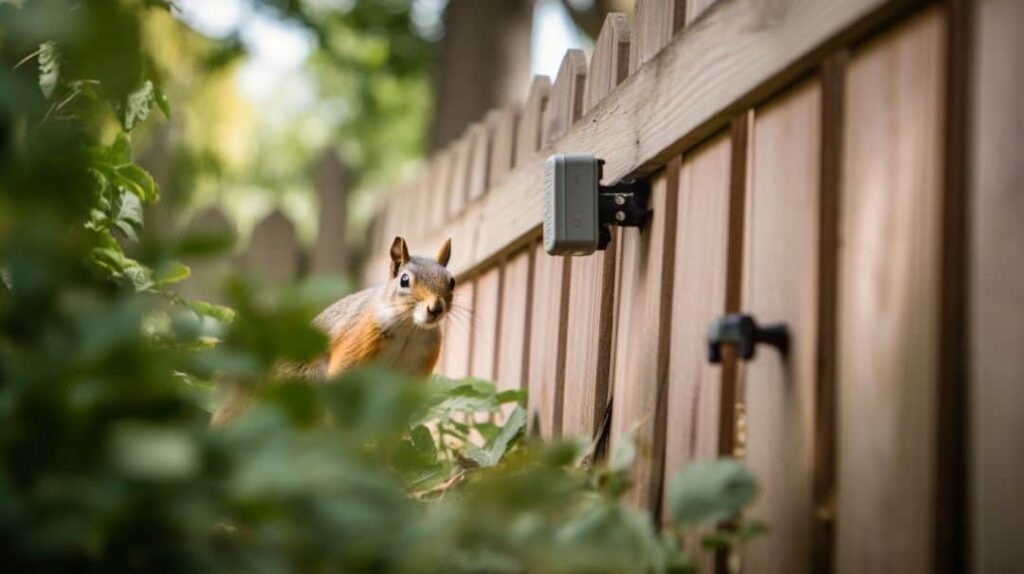
While motion sensors provide substantial security benefits, there are some limitations homeowners should be aware of:
- Limited detection range – Sensors have a fixed effective detection range. Large houses or outdoor areas may require installing multiple motion sensors for full coverage.
- False alarms – Motion sensors can be prone to false alarms triggered by pets, curtains blowing, changes in light or temperature, small wildlife, and even dense foliage. Appropriate sensor selection and sensitivity adjustments can help mitigate this.
- Wireless interference – Wireless motion sensors can face connectivity disruptions or interference from nearby electronic devices using the same radio frequency. Proper placement avoids this.
- Weather resistance – Outdoor motion sensors must withstand environmental factors like rain, wind, snow, humidity and temperature extremes. Check that exterior sensors are weatherproof and water-resistant.
- Physical obstructions – Blockades like walls, furniture, bushes or trees can obstruct motion detection if the sensors are not thoughtfully positioned during installation.
By being aware of these limitations and taking precautions, homeowners can optimize their use of motion sensors and minimize any downsides. For instance, placing multiple layered sensors avoids blind spots, while proper sensitivity calibration deters false alarms.
Future Possibilities for Motion Sensing Technology

Motion sensing capabilities and applications will continue expanding alongside advancements in home automation and IoT. Here are some innovations we might see in the near future:
- Integrated pet-immune sensors with AI algorithms that can reliably distinguish between human and animal motion to prevent false triggers.
- Improved battery technology for battery-powered sensors to enable 2-3 years of continuous operation without battery changes.
- Expanded detection ranges of 50 ft or more indoors and 100+ ft outdoors via improved sensor designs. This provides wider coverage.
- Drones and robots with embedded motion sensors for enhanced perimeter monitoring and alarm response.
- Two-way talk features to allow homeowners to audibly warn or communicate with intruders through motion sensors.
- Face and fingerprint recognition in addition to motion detection for identifying authorized household members.
- Seamless integration and automation with other smart home and security systems including lights, thermostats, locks, cameras and more based on motion sensor activity.
- Real-time tracking via motion sensors integrated into home security cameras and devices to show movement paths.
- Machine learning and AI to better differentiate between threats and non-threats while adapting to owners’ needs over time for reduced false alarms.
The potential for motion sensors in home security is tremendous as the technology evolves. However, remember that proper placement and usage will remain vital to harnessing the full benefits.
Why Choose Professional Installation?
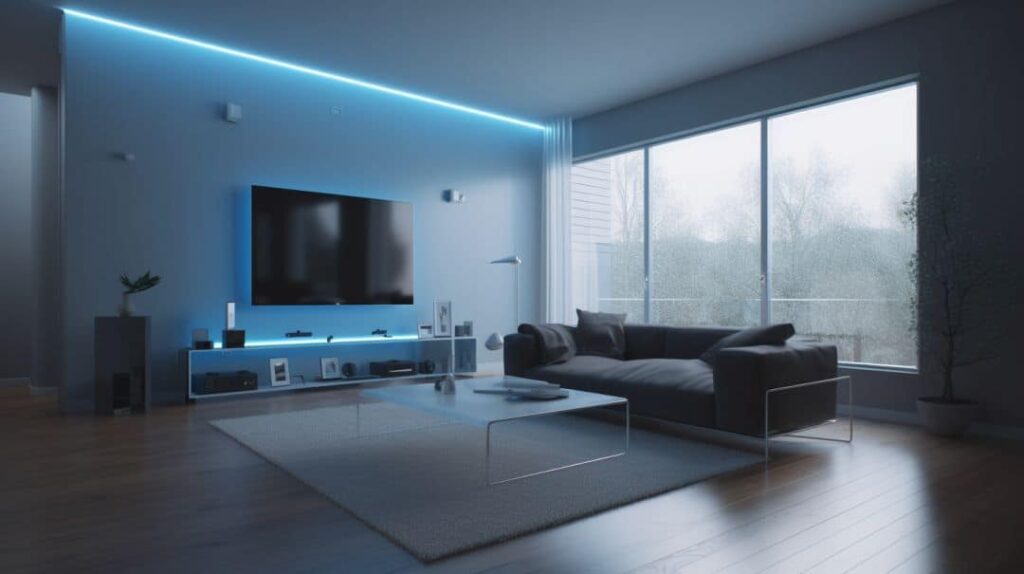
While DIY installation of motion sensors is technically possible, partnering with a professional security company has major advantages:
- Optimal sensor placement based on expert analysis of your home’s security risks and weak spots. Professionals know the most strategic mounting locations to fully cover your interior and exterior with layered motion sensing.
- Proper installation and wiring ensures your motion sensors function reliably for years with minimal maintenance required. Avoid potential problems down the line with DIY mishaps.
- Integration with security system that allows professional monitoring, instant alerts to your phone, and seamless management alongside your other security cameras and devices.
- Testing and sensitivity adjustments enables the motion sensors to be calibrated by experts for optimal performance in detecting genuine threats without excessive false alarms.
- Regular maintenance and upgrades are easily provided to keep your motion sensors in top condition. Problems get fixed promptly. New enhancements can be added seamlessly.
- Warranties and support give you assurance that professionals stand behind their security sensor work. You have a point of contact for ongoing optimization.
For most homeowners, professional installation and management of motion sensors provide ideal functionality with minimal hassle.
Why Choose Jefferson Security Cameras?

Jefferson Security Cameras has over 25 years of experience installing and monitoring home and business security solutions in the region. We are fully licensed, and insured and can provide 24/7 professional monitoring.
Our security camera systems always include strategically positioned motion sensors to maximize property coverage both indoors and outdoors. We use leading brands and the latest motion-sensing technology paired with AI analytics.
Other services we offer include access control systems, intercoms, alarms, smart locks, and more. We tailor solutions based on your unique needs and property.
Contact Jefferson Security Cameras today for a free home security assessment. Our experts will inspect your home, identify vulnerabilities, and recommend an integrated security system with cameras and motion sensors optimally placed to protect what matters most – your family and home.
FAQs
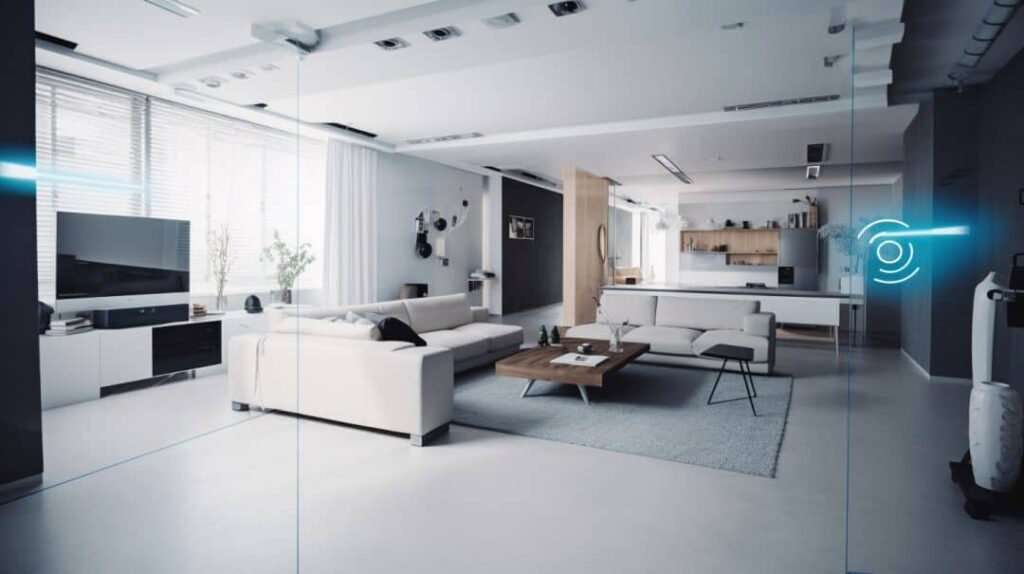
What are the main types of motion sensors used for home security?
The most common motion sensor types are passive infrared (PIR), microwave, ultrasonic, and dual-technology. PIR sensors detect temperature changes from body heat, microwave sensors process disturbance patterns, ultrasonic uses high-frequency sounds, and dual-tech combines two methods.
Where is the best placement for motion sensors outdoors and indoors?
Outdoors, install motion sensors covering driveways, walkways, porches, fences, and yards. Indoors, place them in entryways, hallways, staircases and large rooms. Position them strategically to monitor key areas and maximize coverage.
How do you reduce false alarms with motion sensors?
To minimize false alarms, select quality motion sensors, properly adjust the sensitivity and detection field settings during installation, position them to avoid triggers from sunlight/pets, and maintain them well. Dual-tech sensors also help by verifying motion in different ways.
What’s the detection range of most motion sensors?
Detection range varies by sensor type and environment. PIR can cover 20-26 ft, microwave up to 40 ft, and ultrasonic approximately 15-20 ft. Exterior ranges are wider. Multiple strategically placed sensors are needed to monitor large homes.
How are motion sensors installed – DIY or professionally?
DIY installation is possible by following the product guide. However, professional installation ensures optimal placement, integrated connectivity, proper wiring, sensitivity calibration, and ongoing maintenance for maximum security. Most homeowners prefer professional installation.

